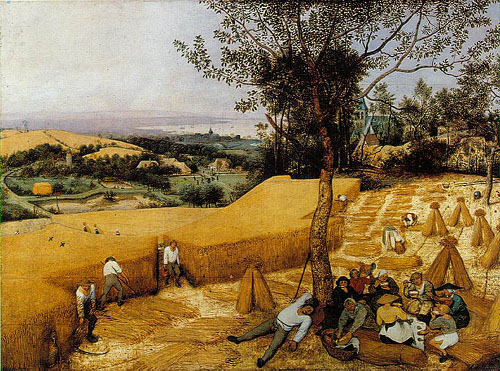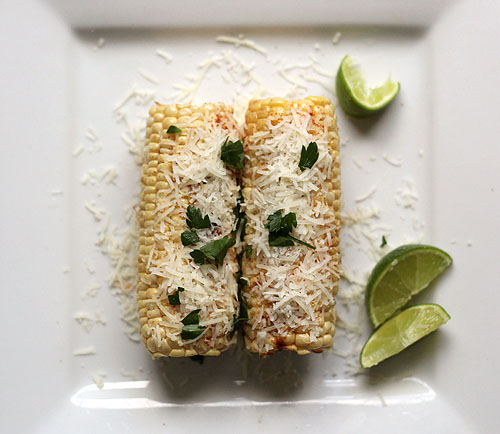Eat This Poem is a new blog that combines food and poetry in much the same way Feasting on Art considers food and art. The website is written by Nicole Gulotta who has an MFA in poetry enabling her to marry beautiful words with delicious food. Working with her on a collaboration only felt natural and when she suggested a post investigating William Carlos Williams and Pieter Bruegel, I knew I was fated to work with her. While an undergrad I double majored in both English and History of Art and in my final semester, I did an entire course in William Carlos Williams. My major paper considered the collection of poems titled Pictures from Bruegel which is a composite representation of Bruegel’s work through the viewpoint of Williams. The poetry illustrates the way in which Williams’ eye follows the canvas and his impressions while gazing upon the works.

Pieter Bruegel the Elder, the 16th-century Flemish Renaissance painter, was a master landscape artist. Within these landscapes, small narratives are depicted which are focused on the life of the working class society. The scenes are split between work and play with subjects varying from wedding dances to haymaking as pictured above in The Harvesters (1565). This panel is one of six created to depict the seasons and represents the late summer/early autumn when peasants would reap the hay. Rather than focus on the action of the peasants, Bruegel choose to take a broad view of the landscape to portray the way in which the land is transformed through farming. Although the landscape is the heart of Bruegel’s painting, the subjects of The Corn Harvest by William Carlos Williams are the peasants in the foreground of the canvas. For further reading about Williams’ The Corn Harvest and an inspired recipe for a farmers egg sandwich with basil aioli, visit Eat This Poem.

Grilled Corncobs with Parmesan, Lime & Paprika
Yield: 2 servings
Inspired by a dish served at Ms.G’s in Potts Point
2 corncobs
1 tablespoon butter
1/2 cup grated parmesan cheese
juice of 1/2 of a lime
1/2 teaspoon hot paprika
handful of fresh coriander leaves
Husk the corncobs and remove all of the silk. Rub them with a bit of butter and place on a grill or in a griddle pan over medium-high heat. Cook for about 5 to 10 minutes depending on the size of the corncob, rotating every couple of minutes until the cob is evenly cooked. The corn will be soft and tender when done.
Remove from heat and immediately cover with a quarter cup of grated Parmesan cheese so the residual heat in the corn melts the cheese. Squeeze over the lime, dust with the hot paprika and scatter the coriander leaves. Serve immediately.

10 comments
Nicole Gulotta (@nicolegulotta) says:
Mar 25, 2012
So glad we did this Megan! RT @mfizell: My collaboration with Eat This Poem @nicolegulotta http://t.co/XpShW2F1
Nicole @Eat This Poem says:
Mar 25, 2012
Megan, I’m so glad we could collaborate on this post! Your corn looks delicious, so perfect for summer. Love that the creative process produced two very different recipes using the same inspiration!
Rosa says:
Mar 26, 2012
I love Bruegel’s paintings. This is a lovely dish.
Cheers,
Rosa
Julie says:
Mar 27, 2012
You two were meant to work together.
Big Fan says:
Apr 2, 2012
Yum, corn on the cob!
Brooke David says:
Apr 3, 2012
This is an incredible painting and an amazing recipe!
Issues of Equality in Vorticism « eng4620gillingham says:
May 25, 2012
[…] http://www.feastingonart.com/2012/03/pieter-bruegel-william-carlos-williams-grilled-corncobs-with-pa… Share this:TwitterFacebookLike this:LikeBe the first to like this post. This entry was posted in Uncategorized. […]
Jon says:
May 13, 2013
Awesome
The Friday list and art workshops at the shed - Local is Lovely says:
May 28, 2015
[…] here’s William Carlos Williams again, on another new discovery Feasting on Art. This wonderful blog by Sydney-based art historian and […]
Feasting on Art Project Archive | Megan R. Fizell | Art Historian & Theorist says:
Dec 29, 2021
[…] From 2009 to 2015, I undertook a web-based research / writing / cooking project titled Feasting on Art. At the outset, the project focused on still life paintings and other food-related artworks to explore the intersections between food and art. I described the project as “an innovative translation of painting to plate” and by taking cues from the ingredients depicted in each artwork, I composed recipes as edible adaptations of classic still life. Alongside the recipe, each post combined research into the artist and artwork alongside a history about the cuisine or dish. I As the project evolved, I collaborated with other scholars, artists, and food writers to produce posts covering specific topics like colours or poetry. […]